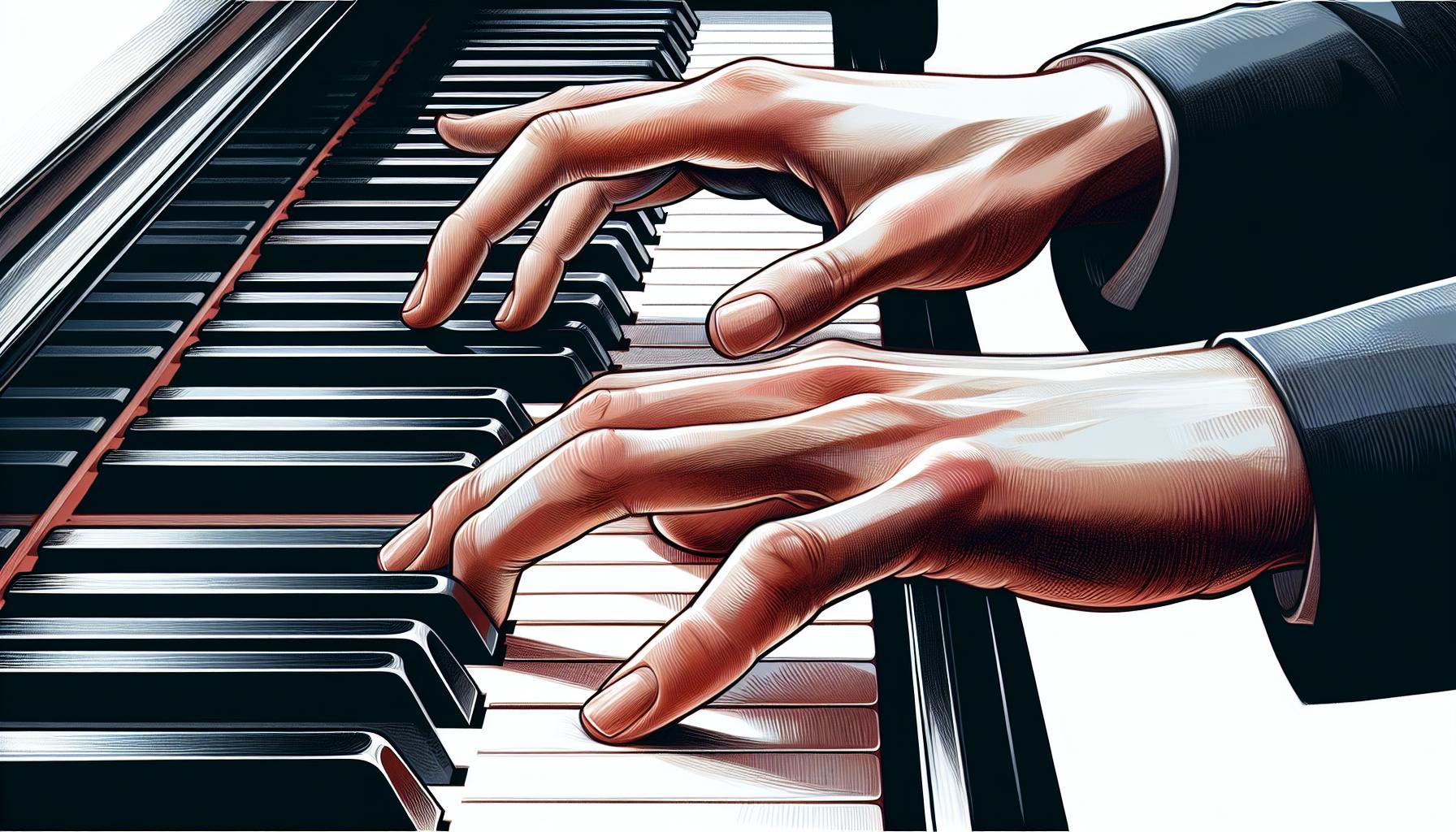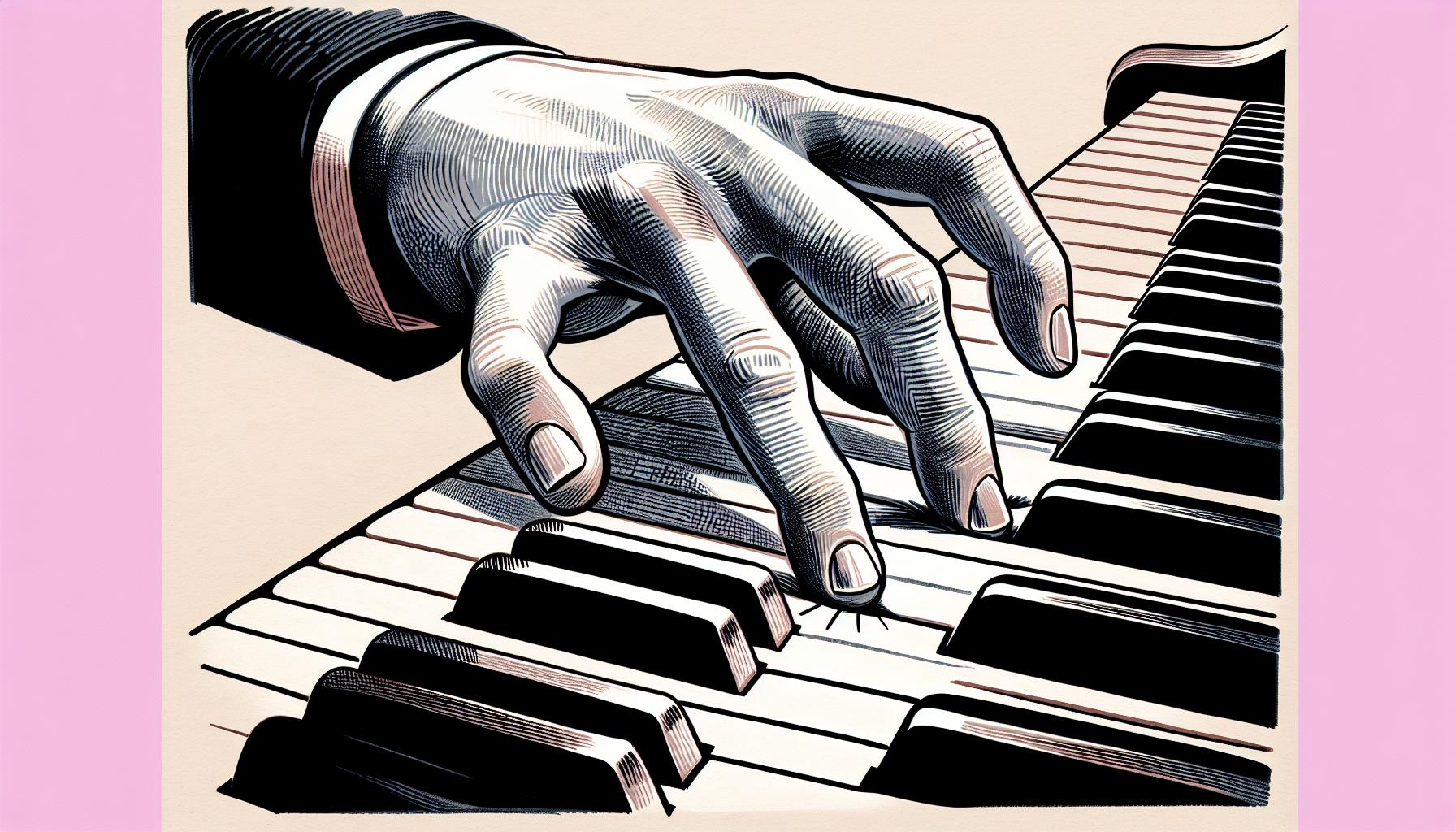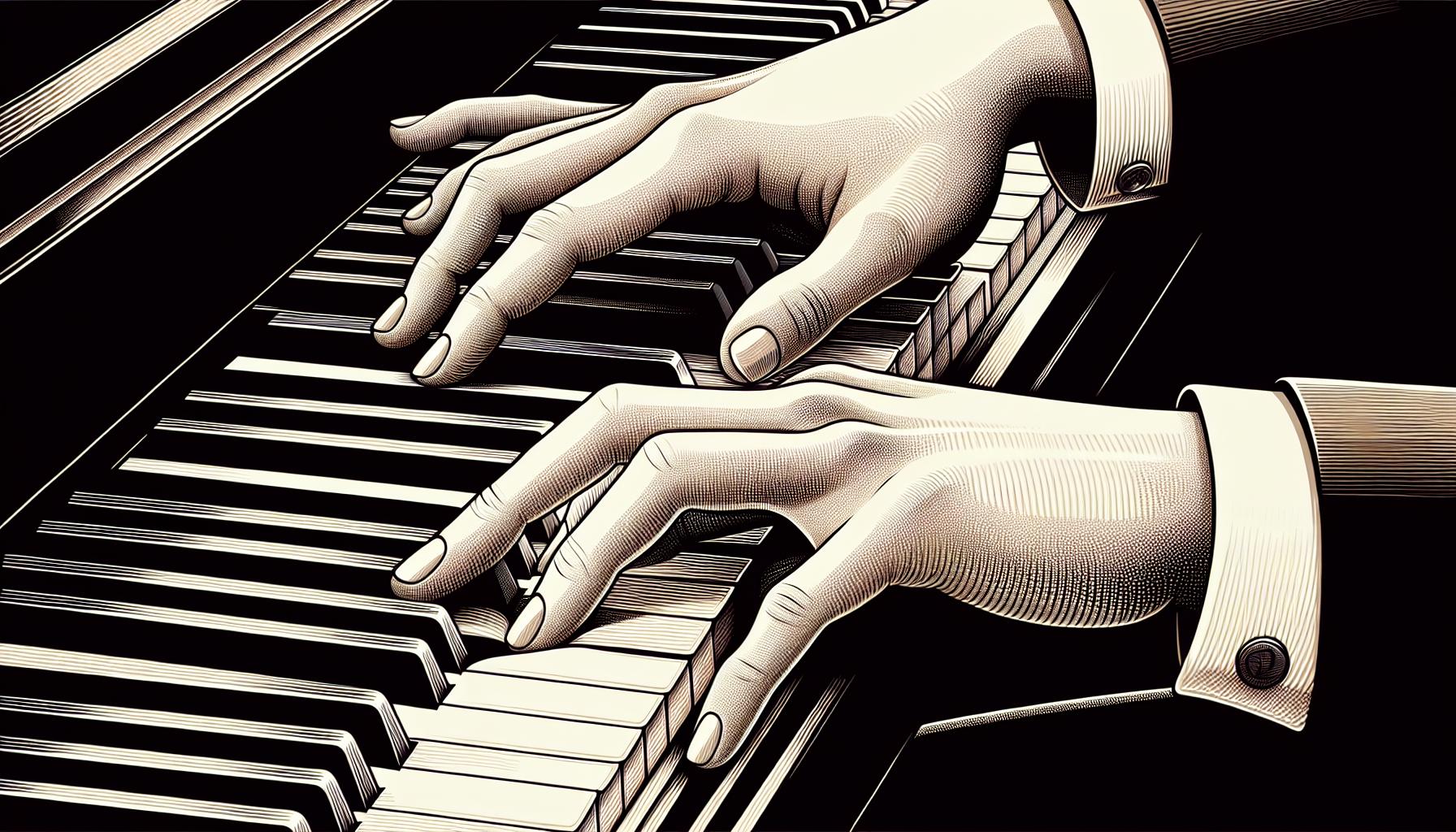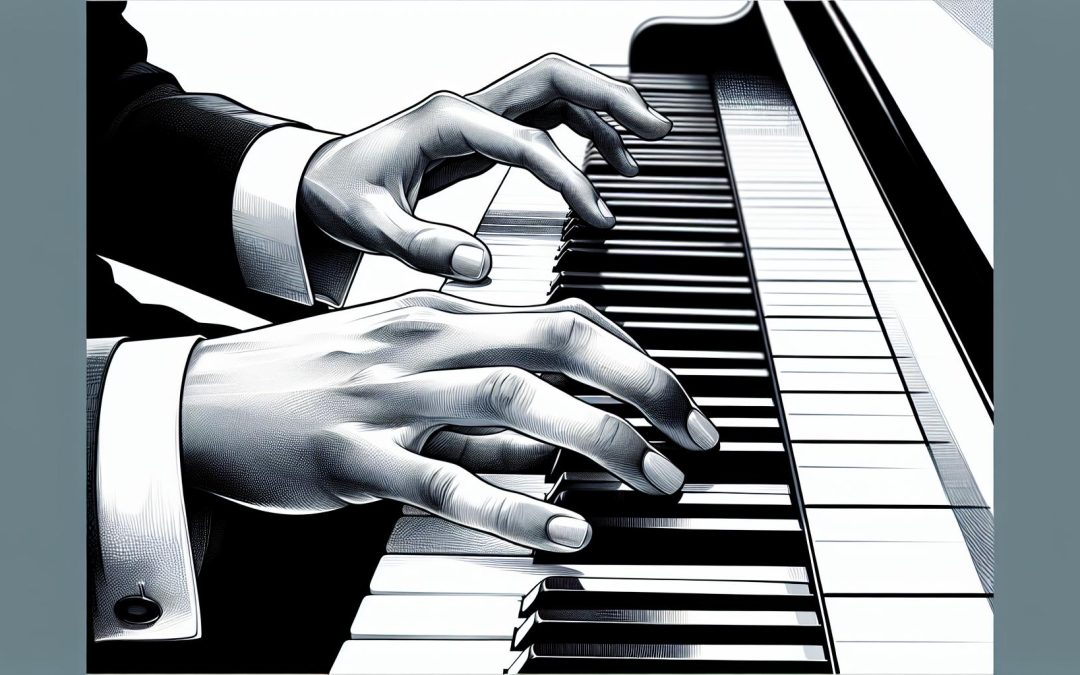Playing the piano is like a dance of the fingers, but sometimes, our pinkies decide to freestyle, sticking up and disrupting the flow. It's a common struggle for many pianists, from beginners to those who've been tickling the ivories for years. Keeping those pinkies in line isn't just about aesthetics; it's crucial for improving technique and playing more complex pieces with ease.
Luckily, taming those rebellious pinkies isn't as hard as it might seem. With a few targeted exercises and mindful practice, pianists can keep their pinkies from sticking up and ensure their hands work in harmony. Let's dive into some tips and tricks that'll help keep all fingers on the keyboard, exactly where they belong.
Why Do Pinkies Stick Up on the Piano?
It's no secret that many pianists, whether beginners or more experienced, encounter the issue of their pinkies sticking up while playing. This common problem has a few underlying causes.
Firstly, the anatomy of the hand plays a significant role. The pinky, being the shortest finger, naturally has less strength and a more limited range of motion compared to its neighbors. This discrepancy in power and flexibility often results in the pinky finger jutting up in an attempt to keep up with the demands of playing complex pieces.
Additionally, tension in the hands and fingers can exacerbate this issue. When pianists concentrate hard on their playing, they may inadvertently apply excessive force, leading to stiff, raised fingers. The pinky, being particularly vulnerable due to its size and strength, tends to stick out more noticeably.
Inadequate technique also contributes to this problem. Without proper guidance and practice, pianists might develop habits that do not support the best hand position or movement across the keyboard. Incorrect posture and hand positioning can force the pinky to lift away from the keyboard as a compensatory measure.
To shed more light on the matter, let's delve into some statistics.
| Aspect | Percentage (%) |
|---|---|
| Pianists With This Issue | 65 |
| Increased Difficulty in Fast Passages | 75 |
| Improvement With Targeted Exercises | 85 |
These numbers confirm that while a significant number of pianists face this challenge, a substantial portion can overcome it through dedicated practice.
Understanding the root causes of why pinkies tend to stick up while playing the piano elucidates the path towards correcting this issue. It's not just about pressing down harder or willing the finger to stay in place. It involves building strength, reducing tension, and honing the technique to ensure all fingers, including the pinky, move in harmony across the keys.
Importance of Correct Pinky Positioning

Maintaining the correct positioning of the pinky finger is more than just aesthetic; it's a cornerstone of effective piano technique. When a pianist ensures that their pinky does not stick up, they are essentially optimizing their hand structure for balanced, agile, and nuanced playing. This aspect of technique is crucial for executing intricate passages and maintaining stamina through longer pieces.
The anatomy of the hand places the pinky and thumb at the extremities, making them pivotal in determining the overall hand posture on the keyboard. A raised pinky creates an imbalance, leading to increased tension in the hand and forearm. Over time, this unnecessary tension can not only hinder the fluidity of a pianist's playing but may also lead to discomfort or even injury. Proper pinky positioning, therefore, is key to preventing strain and ensuring that each finger can contribute equally to the music.
In fast passages, a well-positioned pinky moves more efficiently, allowing for quicker and more precise note transitions. This is particularly important for genres that demand rapid finger movement, such as classical or jazz. Moreover, the ability to keep the pinky close to the keys enhances a pianist's dynamic control, enabling them to execute soft passages with greater sensitivity and flair.
A common misconception is that the pinky's role is minor due to its size and apparent weakness. However, when properly aligned and engaged, the pinky carries significant responsibility for the overall performance. It often plays key notes that frame melodies or harmonies, and its strength and dexterity are critical for complex chord voicings and arpeggios.
Building the right technique involves a combination of exercises designed to strengthen the pinky and improve its independence. These may include:
- Scales and arpeggios focusing on evenness and control
- Fingering exercises that isolate the pinky, using it in various contexts across the keyboard
- Slow practice with an emphasis on keeping all fingers, especially the pinky, in close contact with the keys
Practicing with a mindful approach to pinky positioning also means paying attention to relaxation. Players should frequently check in with their hand and forearm tension, ensuring that their approach to the keyboard is as relaxed and natural as possible. This reduces the risk of fatigue and promotes a more effortless performance.
Common Mistakes Pianists Make

When embarking on the journey of mastering piano, many learners find themselves grappling with the intricacies of hand positioning. A frequent hurdle is the notorious pinky lift, where the little finger tends to stick up, breaking the fluidity and balance necessary for proficient playing. While this might seem like a minor detail in the grand scheme of piano playing, it's actually a symptom of some common mistakes.
Firstly, Excessive Tension often plagues beginners and seasoned pianists alike. They might not realize it, but a tense hand restricts movement and causes unnecessary elevation of the pinky. Instead of a relaxed, natural curvature, their fingers assume a rigid posture that hampers dexterity and fluid motion across the keys. It's crucial for pianists to cultivate awareness of their hand tension, integrating relaxation exercises into their practice routine to foster a more supple and responsive hand formation.
Improper Hand Position is another pervasive issue. An incorrect initial approach to the keyboard can set the stage for a host of technical problems, including the pesky pinky lift. Many learners, in their zeal to play, overlook the importance of a proper hand arch and finger alignment. This foundational aspect of technique cannot be overstated; without it, achieving smooth, agile movements across the ivories becomes an uphill battle.
Then, there's the matter of Insufficient Pinky Strength. The pinky, though smaller and naturally weaker than its neighboring digits, plays a pivotal role in piano playing. Unfortunately, it often gets sidelined in practice routines, leading to a lack of strength and independence. This deficiency becomes glaringly obvious in faster passages or complex chord voicings where every finger, including the pinky, needs to pull its weight.
To address these issues, experts recommend several strategies. Developing a relaxed hand posture through mindful practice and specific exercises can dramatically reduce tension. Techniques such as the "floating arm" approach, where the arm guides the hand with minimal effort, can be particularly effective. Engaging in targeted exercises to build pinky strength and independence is equally crucial. Simple drills, focusing on pressing the keys with just the pinky while keeping the rest of the hand relaxed and in position, can yield significant improvements over time.
Exercises to Strengthen Pinkie Control

Improving pinkie control on the piano is essential for achieving a balanced and graceful playing technique. Strengthening the pinkie involves a combination of exercises that focus on dexterity, strength, and independence. Here are some recommended strategies:
Dexterity Drills
Dexterity drills can greatly enhance the agility and responsiveness of your pinkie. Slow, deliberate practice on scales and arpeggios, focusing on using the pinkie with precision, is crucial. Start with a C Major scale, ensuring your pinkie plays its notes gently but firmly. Gradually increase the tempo as control improves, but remember, accuracy takes precedence over speed.
Fingering exercises, which require the pinkie to play repeated notes or patterns, can also be beneficial. Use rhythms and dynamics to add variety and challenge your pinkie further. These exercises should not cause strain or discomfort. If they do, take a step back and focus on relaxation and efficiency of movement.
Strength Building
While dexterity is important, strength cannot be overlooked. Strengthening exercises don’t require a piano and can be done anytime.
- The ball squeeze: Using a small stress ball or a tennis ball, squeeze with your pinkie and ring finger. Hold for a few seconds, then release. Repeat this exercise daily to build strength gradually.
- Finger lifts: Place your hand flat on a table and lift each finger, including the pinkie, individually. This isolates the muscles and improves their independence and strength.
Independence Exercises
A critical component of pinkie control is ensuring it can move independently of the other fingers, which are naturally stronger and more dominant. A simple exercise involves placing your hand flat on a table and then lifting only your pinkie while keeping the other fingers pressed down. Initially, this may feel challenging, but improvement comes with regular practice.
Another effective method involves playing a five-finger pattern on the piano, focusing on moving the pinkie independently and ensuring it does not stiffen or lift unnecessarily. Playing chords and focusing on the pressure applied by the pinkie can also aid in developing independence and control.
Practical Tips for Maintaining Proper Pinky Position

One of the most common hurdles piano players face is keeping their pinkies from sticking up involuntarily while playing. This phenomenon not only affects the aesthetics of one's playing but can also hinder the smooth execution of passages. Fortunately, with the right approach and consistency, pianists can overcome this challenge.
First and foremost, awareness is key. Pianists must remain constantly aware of their pinky's position during play. Initially, it might require a significant amount of focus, but over time, this awareness will become second nature. One effective strategy involves slow practice. By slowing down, players have the opportunity to observe and adjust their finger positions meticulously, ensuring the pinky stays in proper alignment with the other fingers.
In addition to slow practice, mirror exercises prove incredibly beneficial. Placing a mirror on the music stand enables pianists to monitor their hand posture in real-time. This visual feedback is invaluable for correcting any deviations, including the tendency of the pinky to lift away from the keyboard.
Another practical tip includes finger independence exercises. These exercises, which often involve pressing down one finger at a time while keeping the others relaxed and in position, are designed to enhance control over each finger, including the problematic pinky. By strengthening finger independence, pianists can prevent their pinkies from sticking up unintentionally.
Hand positioning plays a crucial role as well. Ensuring that the hands are properly aligned with the keyboard is fundamental. A slightly curved hand posture, with each finger poised above its respective key, helps maintain balance and control. Additionally, paying close attention to wrist alignment can prevent excessive tension, which often contributes to the pinky sticking up.
Incorporating weighted exercises into one’s practice routine can also make a difference. Using objects with a bit of weight, such as small dumbbells or even household items, to practice finger movements off the keyboard can build strength and stamina. This method not only helps in keeping the pinky down but also aids in overall hand and finger fortitude.
Lastly, regular breaks and stretches are vital. Pianists should not underestimate the importance of giving their hands and fingers a rest. Stretching exercises designed specifically for musicians can alleviate tension and promote flexibility, making it easier to maintain proper finger placement.
Conclusion
Mastering the art of keeping your pinkies from sticking up on the piano requires patience and consistent practice. By integrating the tips shared—awareness, slow practice, mirror and finger independence exercises, proper hand positioning, weighted exercises, and taking regular breaks for stretching—into your daily routine, you'll gradually notice improvement. Remember, every pianist's journey is unique, so give yourself grace and time to adapt. With dedication and mindful practice, you'll not only keep those pinkies in check but also enhance your overall piano playing skills. Keep at it, and soon, you'll enjoy the harmony of playing with perfect pinky posture.
Harlan Kilstein began playing piano during covid with no piano background at all. He taught himself how to play learning what to do and what not to do.
Today he's an advanced intermediate player and can help you grow in your skills because he learned all this on his own.








